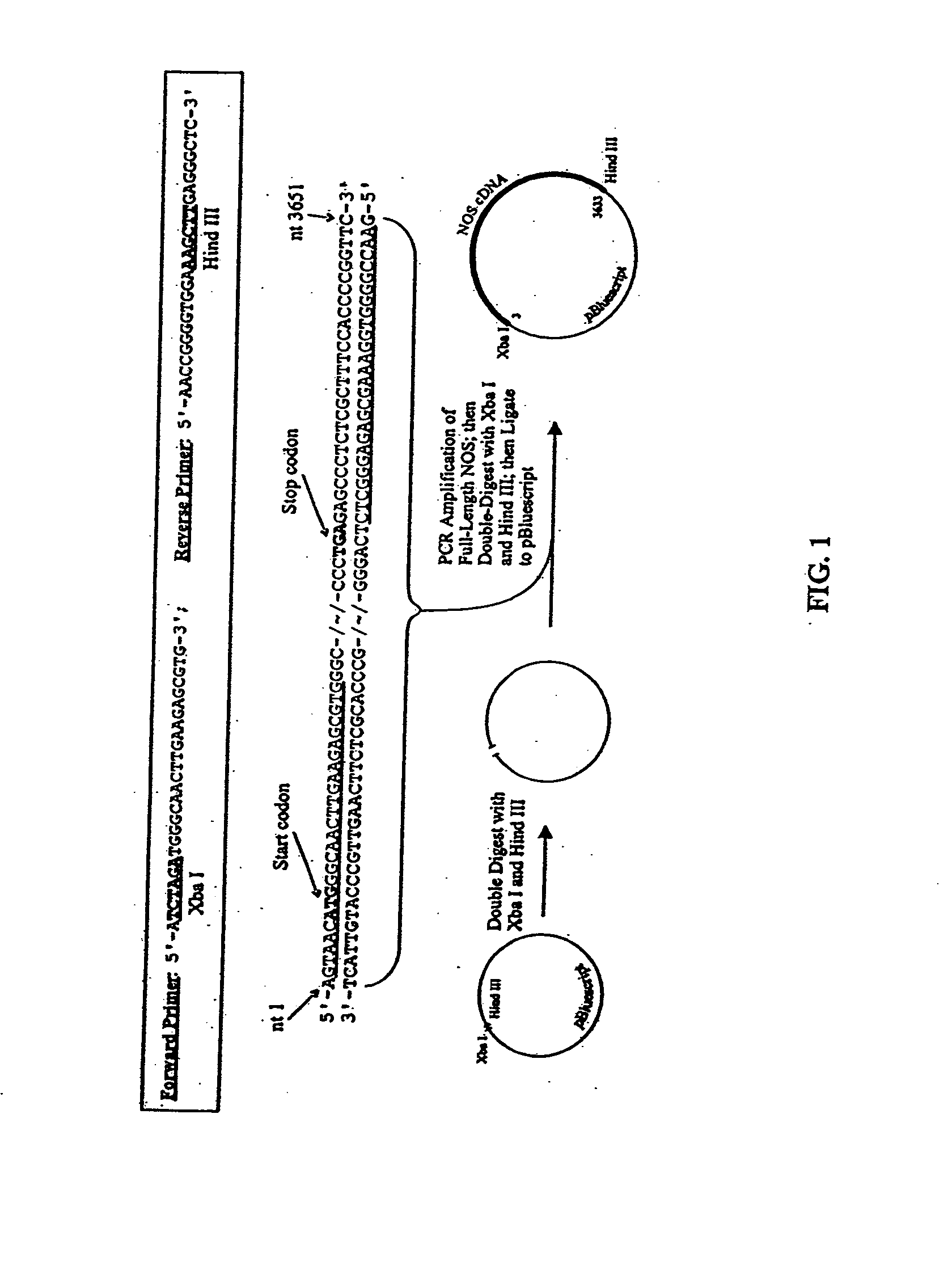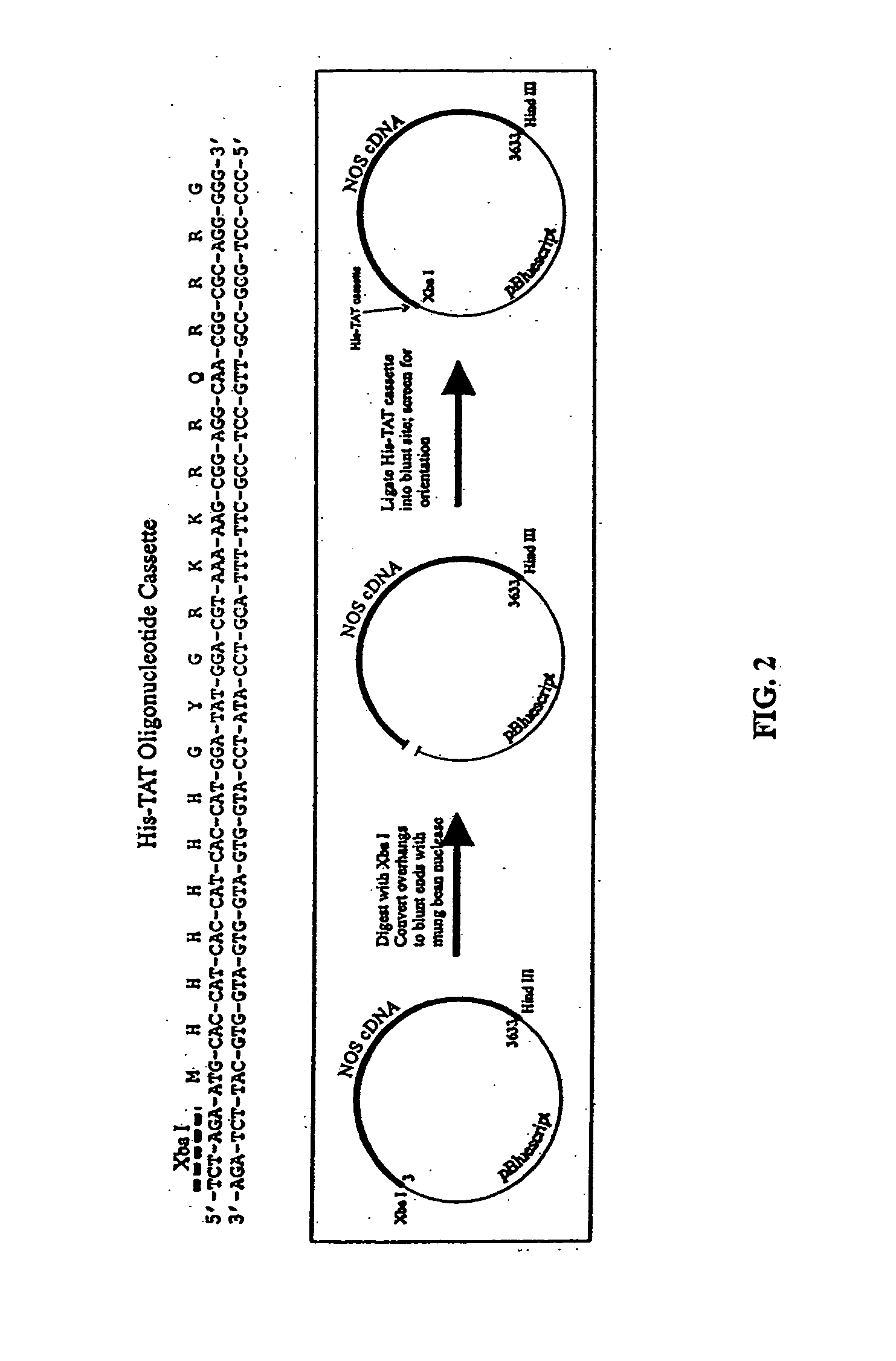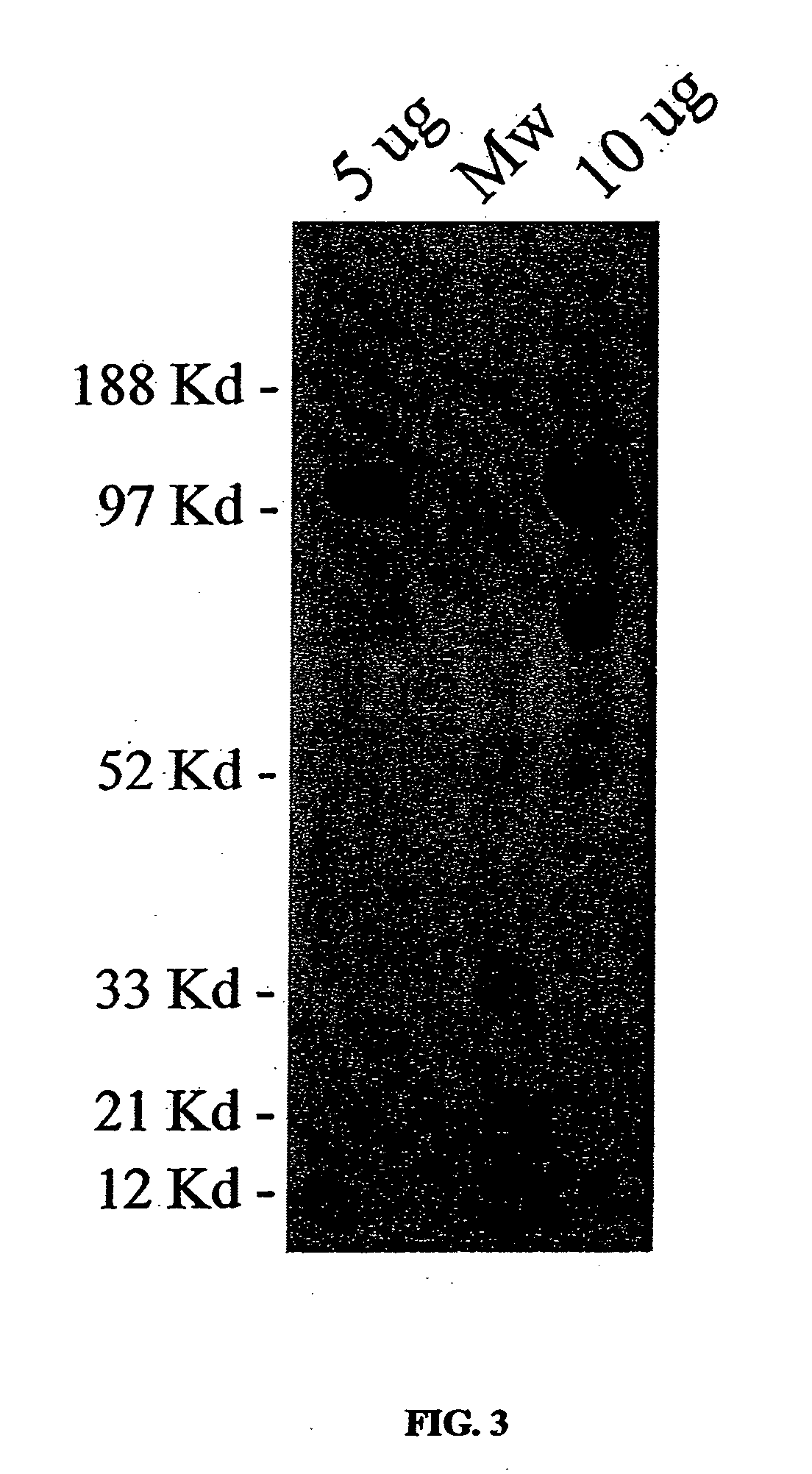Method of treatment of endothelial dysfunction and engineered proteins for same
a technology of endothelial dysfunction and engineered proteins, which is applied in the field of protein therapy and vascular diseases, can solve the problems of inability of these agents to target specific vascular beds or regulate release, each has shown undesirable side effects, and the therapy suffers from the inability to maintain sustained release, so as to overcome the deficiencies of the art, reduce the level of endothelial nitric oxide synthase, and reduce the production of nitric oxide.
- Summary
- Abstract
- Description
- Claims
- Application Information
AI Technical Summary
Benefits of technology
Problems solved by technology
Method used
Image
Examples
example 1
Generation of HT-NOS
[0175] The current invention is a TAT-tagged eNOS molecule used to transduce cells in order to correct endothelial dysfunction. The construction, purification, and initial characterization of the TAT-tagged derivative of porcine endothelial nitric oxide synthase (HT-NOS) are described herein. The cloning and engineering of the full-length eNOS cDNA, the affinity purification of the recombinant protein from a baculovirus expression system, the transduction of cultured cells with the purified material, and the assessment of NO production as an indicator of recombinant NOS activity are described.
[0176] PCR™ Cloning of full-length porcine endothelial NOS. RNA was isolated from aortic endothelial cells from Yucatan miniature swine and cDNA prepared. PCR™ was performed using Pfx polymerase (Stratagene). The forward primer was designed to anneal to the 5′ end of the full-length NOS cDNA, including the initiator methionine start codon (FIG. 1). The forward primer was a...
example 2
Purification of HT-NOS
[0178] The following protocol was derived in part from Venema et al. (1995) with some modifications and is described in detail herein. Ten confluent T185 cm2 flasks of maintenance Hi5 insect cells are split 1:4 into 40 fresh flasks. Cells were infected with 5 μt / flask of the HT-NOS recombinant viral stock (MOI of approximately 1-5) for 1 h with occasional rocking. The media was removed and replaced with 35 ml / flask of fresh media (TNM-FH, 10% FBS, 4 mM glutamine, 40 μg / ml gentamycin, and 3 μg / ml hemin chloride (heme is a NOS prosthetic group and the inclusion of hemin chloride has been shown to be vital for active recombinant NOS; Venema et al., 1995). The cells were incubated at 27° C. for three days, after which time the cells appear heavily infected (pronounced nucleus, enlarged and rounded cells, inhibited cell proliferation were observed). The cells were harvested by striking the flasks on the benchtop followed by centrifugation at 1000×g, for 30 min, at ...
example 3
Treatment of Cells with HT-NOS
[0180] Initial experiments entailed using NIH 3T3 fibroblasts as the model cells for HT-NOS transduction. These are ideal for preliminary studies because they have no endogenous NOS and they exhibit contact inhibition such that confluent monolayers can be studied over a period of several days. Cells were seeded into a 24 well tissue culture plate and allowed to reach confluence over a period of 2-3 days. At this point, the cells appeared flat and tightly packed together with few cells growing up and over each other. The media was removed and the cells washed twice with serum-free DMEM containing 40 mM HEPES pH 7.4, penicillin and streptomycin. The last wash was removed and replaced with 250 μl of serum-free DMEM containing increasing amounts of purified HT-NOS. The cells were incubated at ambient temperature for 1 hour with occasional rocking, after which they were washed twice with complete media (DMEM plus 10% calf serum and antibiotics) followed by ...
PUM
| Property | Measurement | Unit |
|---|---|---|
| Pressure | aaaaa | aaaaa |
| Therapeutic | aaaaa | aaaaa |
| Reactivity | aaaaa | aaaaa |
Abstract
Description
Claims
Application Information
 Login to View More
Login to View More - R&D
- Intellectual Property
- Life Sciences
- Materials
- Tech Scout
- Unparalleled Data Quality
- Higher Quality Content
- 60% Fewer Hallucinations
Browse by: Latest US Patents, China's latest patents, Technical Efficacy Thesaurus, Application Domain, Technology Topic, Popular Technical Reports.
© 2025 PatSnap. All rights reserved.Legal|Privacy policy|Modern Slavery Act Transparency Statement|Sitemap|About US| Contact US: help@patsnap.com



